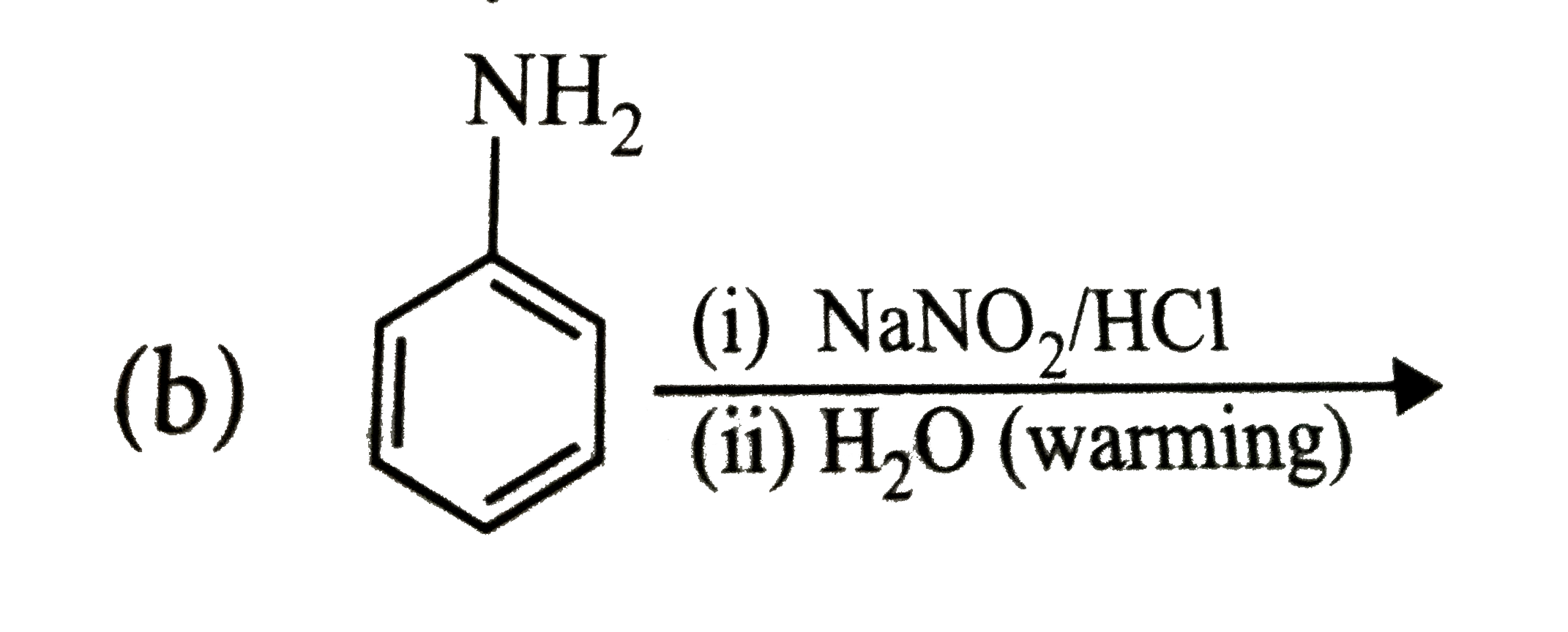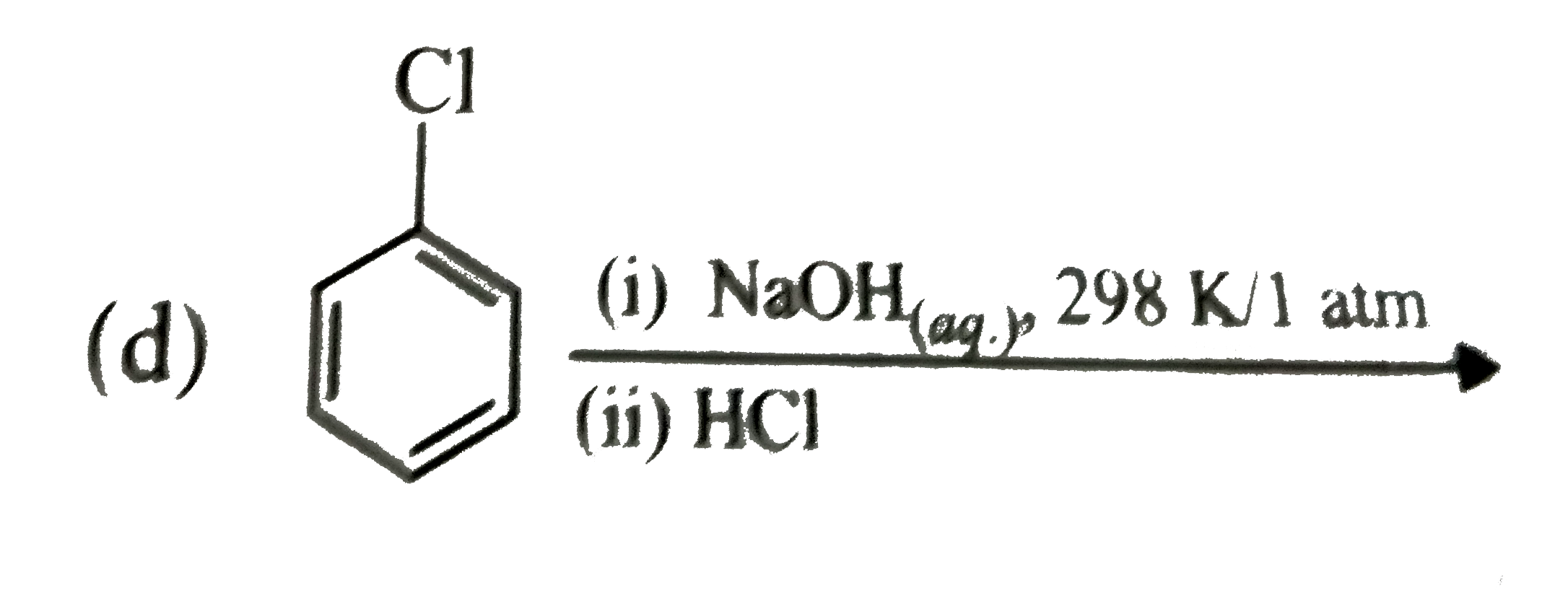Which of the following reaction is expected to readily give a hydrocarbon product in good yield ?
RCOOKElectrolytic−−−−−−→Oxidation
RCOOAgI2−−→
CH3CH3Cl2/hv−−−→
(CH3)3CClC2H5OH−−−−→
The correct Answer is:A
To determine which reaction is expected to readily give a hydrocarbon product in good yield, we will analyze each of the provided options step by step.
Step 1: Analyze Option A
Reaction: Sodium carbonate reacting with electrolytic oxidation.
- In this reaction, we focus on the anode where oxidation occurs.
- The anion (R-C(=O)O⁻) will undergo oxidation, leading to the formation of R radicals and CO₂.
- The R radicals can combine to form a hydrocarbon (R-R), resulting in a hydrocarbon product.
Conclusion for Option A: This reaction can produce a hydrocarbon in good yield.
Step 2: Analyze Option B
Reaction: An ester formation involving R-C(=O)O-Az reacting with I₂.
- The reaction with I₂ leads to the formation of R-C(=O)O radical and AzI.
- The subsequent steps involve the formation of radicals but ultimately lead to the formation of an ester, not a hydrocarbon.
Conclusion for Option B: This reaction produces an ester, not a hydrocarbon.
Step 3: Analyze Option C
Reaction: Chlorination in the presence of light.
- In this reaction, chlorine replaces hydrogen atoms in the hydrocarbon chain through a free radical mechanism.
- The product will still contain chlorine and will not be a pure hydrocarbon.
Conclusion for Option C: This reaction does not produce a hydrocarbon.
Step 4: Analyze Option D
Reaction: Reaction of CH₃CH₂Cl with ethanol (C₂H₅OH).
- In this reaction, the chlorine leaves to form a carbocation, which is then attacked by the ethanol.
- This leads to the formation of an ether, not a hydrocarbon.
Conclusion for Option D: This reaction produces an ether, not a hydrocarbon.
Final Conclusion
After analyzing all the options, it is clear that Option A is the only reaction that readily gives a hydrocarbon product in good yield.
Reaction: Sodium carbonate reacting with electrolytic oxidation.
- The anion (R-C(=O)O⁻) will undergo oxidation, leading to the formation of R radicals and CO₂.
- The R radicals can combine to form a hydrocarbon (R-R), resulting in a hydrocarbon product.
Reaction: An ester formation involving R-C(=O)O-Az reacting with I₂.
- The subsequent steps involve the formation of radicals but ultimately lead to the formation of an ester, not a hydrocarbon.
Reaction: Chlorination in the presence of light.
- The product will still contain chlorine and will not be a pure hydrocarbon.
Reaction: Reaction of CH₃CH₂Cl with ethanol (C₂H₅OH).
- This leads to the formation of an ether, not a hydrocarbon.
After analyzing all the options, it is clear that Option A is the only reaction that readily gives a hydrocarbon product in good yield.
Topper's Solved these Questions
- BOOK - ICSECHAPTER - ALDEHYDES, KETONES AND CARBOXYLIC ACIDSEXERCISE - EXERCISE (PART-II DESCRIPTIVE QUESTIONS) (VERY SHORT QUESTIONS)282videos
ALDEHYDES, KETONES AND CARBOXYLIC ACIDS
- BOOK - ICSECHAPTER - ALDEHYDES, KETONES AND CARBOXYLIC ACIDSEXERCISE - EXERCISE (PART-II DESCRIPTIVE QUESTIONS) ( SHORT QUESTIONS)581videos
ALDEHYDES, KETONES AND CARBOXYLIC ACIDS
- BOOK - ICSECHAPTER - ALDEHYDES, KETONES AND CARBOXYLIC ACIDSEXERCISE - EXERCISE (PART-II DESCRIPTIVE QUESTIONS) ( LONG ANSWER QUESTIONS)478videos
ALDEHYDES, KETONES AND CARBOXYLIC ACIDS
- BOOK - ICSECHAPTER - ALCOHOLS, PHENOLS AND ETHERS EXERCISE - ISC EXAMINATION QUESTIONS25videos
ALCOHOLS, PHENOLS AND ETHERS
- BOOK - ICSECHAPTER - APPENDIX II ( TYPICAL CONVERSIONS)EXERCISE - AROMATIC CONVERSIONS98videos
APPENDIX II ( TYPICAL CONVERSIONS)
Similar Questions
Knowledge Check
- Question 1 - Select One or More
Which of the following reactions give meso product?
A B
B C
C D
D
- Question 2 - Select One
Which of the following reactions will not yield phenol ?
A B
B C
C D
D
- Question 3 - Select One or More
Which of the following reactions give alkylation product ?
A B
B C
C D
D
Which of the following reaction/s give same product?
View SolutionWhich of the following alcohols is expected to give haloform test ?
View SolutionGive product of the following reactions.
 View Solution
View SolutionWhich of the following will most readily give the dehydrohalogenation product ?
View SolutionWhich of the following reactions gives copper as a product
View Solution

